Iowa is located in the Midwestern United States. Thanks to the diverse ecosystems and the fact that it’s the only U.S. state completely bordered by two rivers, Iowa hosts over 1,100 species of fish and wildlife. Animals that inhabit Iowa today include white-tail deer, red foxes, opossums, muskrats, catfish, turtles, bullfrogs, swans, and mountain lions.
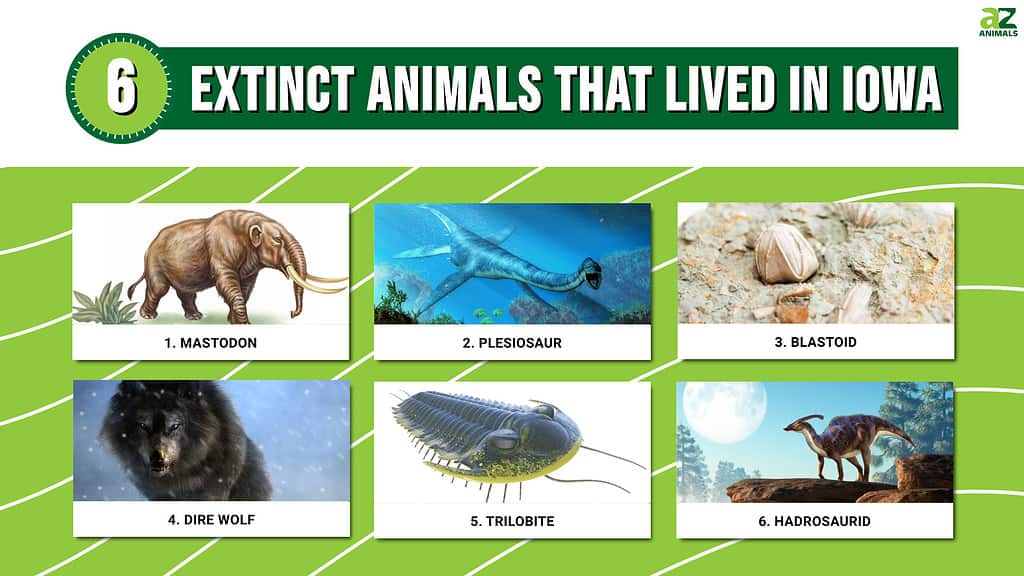
However, Iowa’s wildlife history started millions of years ago, when prehistoric animals inhabited the area. The fossil discoveries date from the Cambrian and Mississippian. During these periods, the territory of Iowa was covered by a shallow sea, where brachiopods, corals, cephalopods, and trilobites lived. Then, the territory became a subtropical coastal plain – the perfect ecosystem for duck-billed dinosaurs.
Later, the Western Interior Seaway covered Iowa, becoming home to plesiosaurs. During the Ice Age, Iowa was home to mammoths and mastodons. That’s a pretty impressive collection of prehistoric animals, isn’t it?!
In fact, the University of Iowa Paleontology Repository has one of the most spectacular fossil collections in the region! Let’s find out more about some of these prehistoric animals that once lived in what we now call “The Hawkeye State.”
1. Mastodon
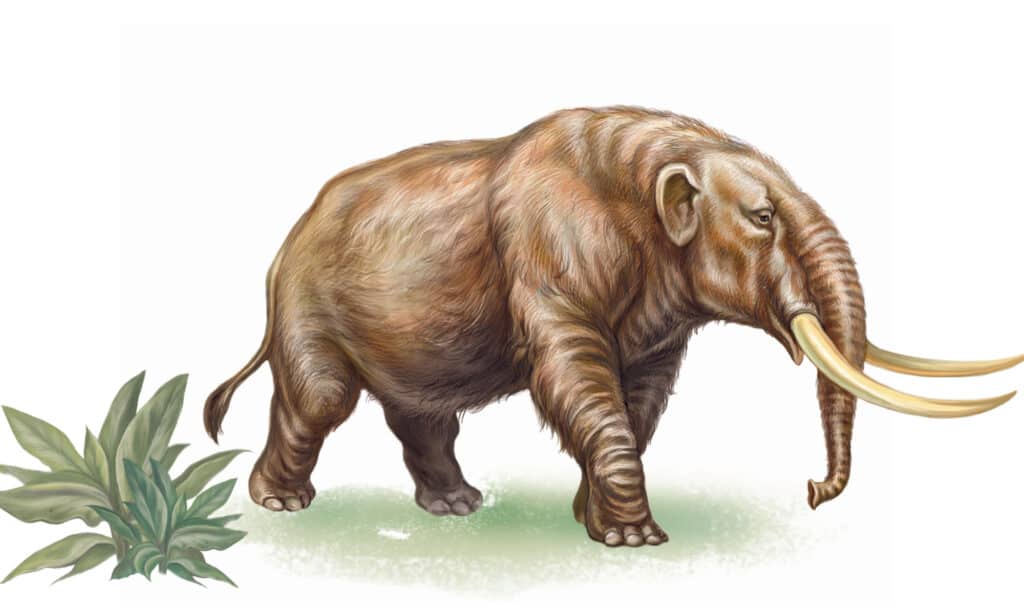
Mastodons were extinct mammals in the family
Mammutidaethat lived in North and Central America.
©Liliya Butenko/Shutterstock.com
| Mastodon | |
|---|---|
| Kingdom | Animalia |
| Phylum | Chordata |
| Class | Mammalia |
| Order | Proboscidea |
| Family | Mammutidae |
| Genus | Mammut |
| Living period | Late Miocene or late Pliocene – 11,000 years ago |
Mastodons were extinct mammals in the family Mammutidae that lived in North and Central America. They appeared during the Miocene or Pliocene. Mastodons lived in the territory until the mass extinction that destroyed almost all Pleistocene megafauna, meaning all large animals that weighed over 99 pounds, such as mastodons, cave bears, saber-tooth cats, and giant deer.
These mastodons inhabited Iowa, too, among other U.S. states. In 2019, a 30-inch-long jaw bone was found on a farm in Iowa. Scientists believe it belonged to a 7-foot-tall juvenile mastodon. Thirty years ago, on the same property, the owners found other mastodon fossils that were first attributed to a woolly mammoth.
2. Plesiosaur
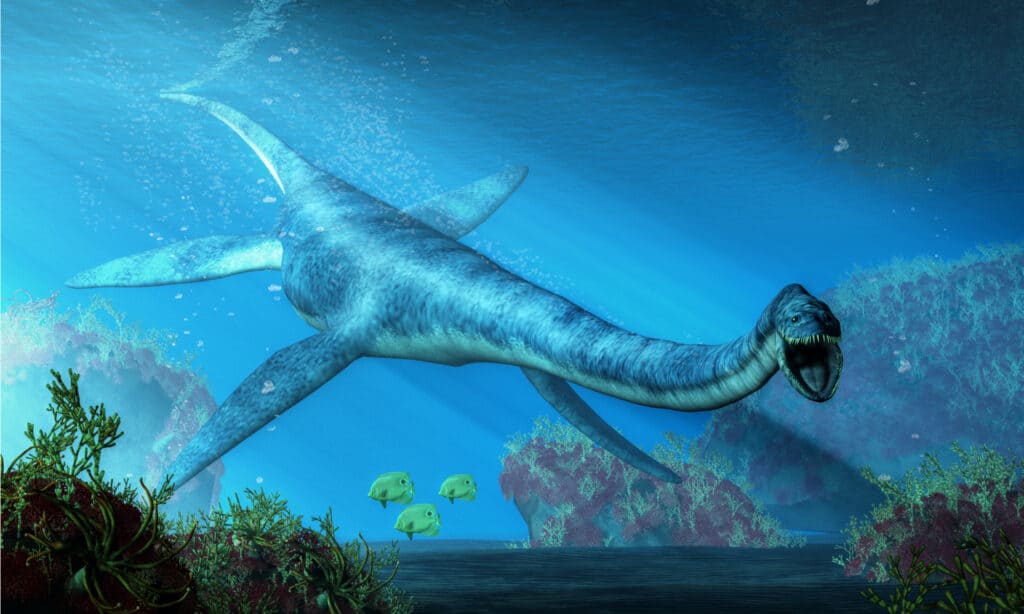
Plesiosaurs were marine reptiles that appeared approximately 203 million years ago, during the Triassic Period.
©Daniel Eskridge/Shutterstock.com
| Plesiosaur | |
|---|---|
| Kingdom | Animalia |
| Phylum | Chordata |
| Class | Reptilia |
| Superorder | Sauropterygia |
| Genus | Plesiosaurus |
| Order | Plesiosauria |
| Living period | 203–66 million years ago |
Plesiosaurs were marine reptiles that appeared approximately 203 million years ago, during the Triassic Period. They disappeared 66 million years ago because of the Cretaceous-Paleogene extinction event. Adult plesiosaurs could be as small as 4.9 feet and as long as 49 feet, making them one of the biggest marine predators, along with sharks or mosasaurids. A plesiosaur’s skull measured 7.3–9.4 feet long. In terms of their appearance, plesiosaurs were of two main types:
- Plesiosauromorph build: small head, long neck;
- Pliosauromorph build: large head, short neck; they were apex predators, feeding on large prey.
They are believed to have lived in Iowa after the territory was covered by the Western Interior Seaway, as these reptiles were completely aquatic.
3. Blastoid

Blastoids are classified into two orders: Fissiculata and Spiraculata.
©iStock.com/SeashoreDesign
| Blastoid | |
|---|---|
| Kingdom | Animalia |
| Phylum | Echinodermata |
| Subphylum | Blastozoa |
| Class | Blastoidea |
| Living period | From Ordovician/Cambrian until the Permian |
Blastoids are a type of echinoderm. Scientists call echinoderms any species in the Echinodermata phylum, such as brittle stars, starfish, sea cucumbers, or sea lilies. Scientists consider that blastoids appeared either during the Ordovician or the Cambrian and lived until the end of the Permian, 250 million years ago. Blastoids likely evolved from cystoids, another class of extinct echinoderm that lived during the Paleozoic era until the Devonian Period. Blastoids are classified into two orders: Fissiculata and Spiraculata.
Archeologists believe blastoids lived in Iowa during the Mississippian period, meaning 358.9 to 323.2 million years ago. Blastoid remains were found in southeastern Iowa.
4. Dire Wolf
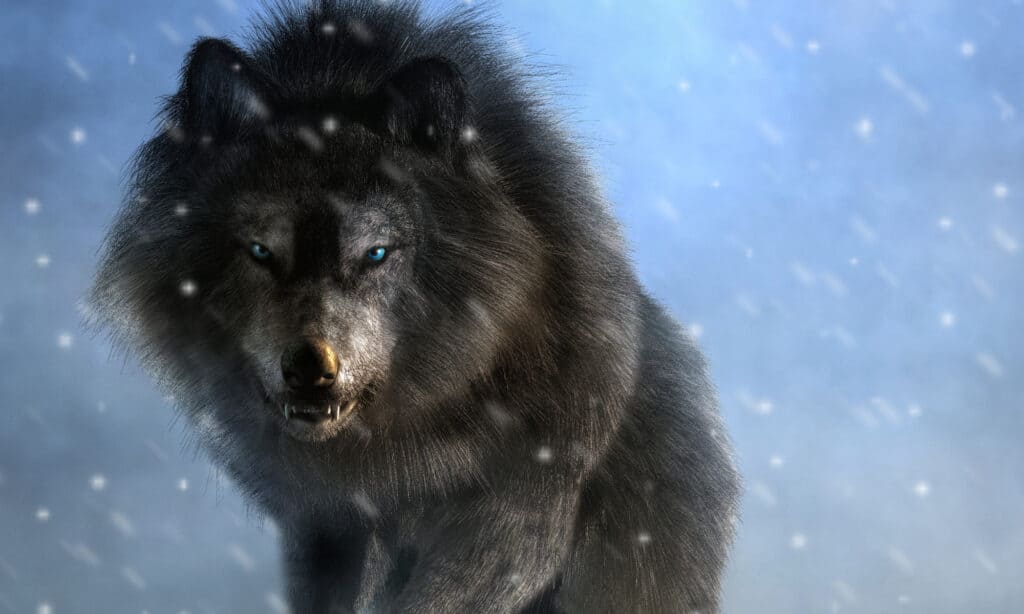
Dire wolves can be compared to the living Yukon wolf and northwestern wolf.
©Daniel Eskridge/Shutterstock.com
| Dire Wolf | |
|---|---|
| Kingdom | Animalia |
| Phylum | Chordata |
| Class | Mammalia |
| Order | Carnivora |
| Family | Canidae |
| Subfamily | Caninae |
| Tribe | Canini |
| Subtribe | Canina |
| Genus | Aenocyon |
| Species | Aenocyon dirus |
| Living period | Late Pleistocene-Early Holocene; 125,000-9,500 years ago |
If you’ve ever watched “Game of Thrones,” you probably already know what dire wolves are, as they appear in the TV series at the very beginning when Robb Stark finds six orphaned dire wolf pups.
Historically, dire wolves lived 125,000–9,500 years ago, during the Late Pleistocene and Early Holocene epochs. They lived in North and South America and eastern Asia and inhabited grasslands, forested mountain areas, plains, arid savannahs, and steppes.
Dire wolves can be compared to the living Yukon wolf and Northwestern wolf. The distinction between them is that the dire wolf had a larger head (as large as 12 inches) and smaller feet.
One of the biggest dire wolf skulls ever found in North America was discovered in Iowa, near the Nodaway River. It measures 11.31 inches long and consists of numerous teeth, a maxilla, and a mandible. This skull was sold for $52,200 in 2018 in Dallas.
5. Trilobite

Trilobites lived in Iowa during the early Paleozoic when the territory was covered by water.
©SciePro/Shutterstock.com
| Trilobite | |
|---|---|
| Kingdom | Animalia |
| Phylum | Arthropoda |
| Clade | Arachnomorpha |
| Subphylum | Trilobitomorpha |
| Class | Trilobita |
| Living period | 521-252 million years ago |
Trilobites appeared 521 million years ago and disappeared 252 million years ago. They lived between the Early Cambrian and the Permian periods. They are one of the earliest groups of arthropods on Earth. Over the years, they evolved so much that 20,000 trilobite species appeared. The first trilobite fossils found on Earth were redlichiids and ptychopariid bigotinids.
Trilobites lived in Iowa during the early Paleozoic when the territory was covered by water. The sea was also home to many other aquatic animals, including brachiopods, cephalopods, corals, mollusks, and bryozoans.
The best trilobite collection in the United States is in Hamburg, New York. The discovered trilobite fossils were and still are of great value for accurately depicting prehistoric life on Earth.
6. Hadrosaurid
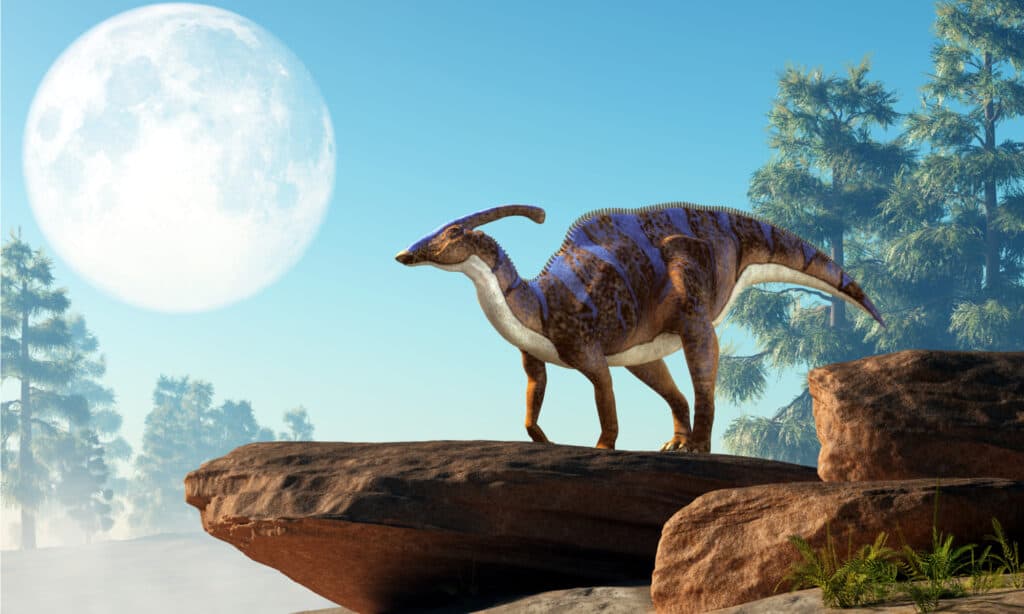
Hadrosaurids are also called duck-billed dinosaurs due to their laterally stretched and flattened rostral bones.
©Daniel Eskridge/Shutterstock.com
| Hadrosaurid | |
|---|---|
| Kingdom | Animalia |
| Phylum | Chordata |
| Clade | Dinosauria |
| Order | Ornithischia |
| Clade | Ornithopoda |
| Clade | Hadrosauromorpha |
| Family | Hadrosauridae |
| Living period | Late Cretaceous period |
Hadrosaurids are also called duck-billed dinosaurs due to their laterally stretched and flattened rostral bones. They were herbivore dinosaurs, coming from iguanodontian dinosaurs that lived from the Middle Jurassic to the Late Cretaceous. The first hadrosaurid fossil was discovered during an 1854-1856 expedition near the Judith River.
Hadrosaurids lived in forests in Europe, Asia, and North America and fed on leaves and twigs. Scientists came to this conclusion after studying multiple hadrosaurid teeth.
Iowa’s first confirmed dinosaur fossil was discovered in Guthrie County in 1982. After further investigation, the Geological Survey stated that the vertebra most likely belonged to a hadrosaur.
Thank you for reading! Have some feedback for us? Contact the AZ Animals editorial team.








